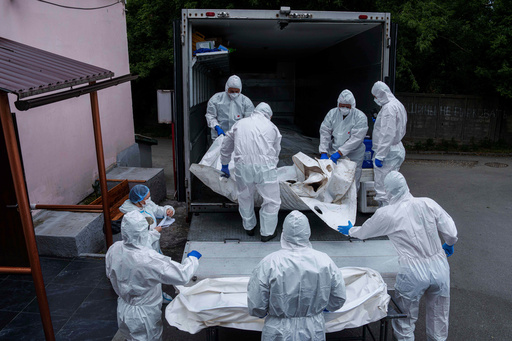WASHINGTON — The world’s most vulnerable countries are encountering increasing setbacks as conflicts become more severe and frequent. This is the bleak finding from the World Bank’s inaugural detailed examination of 39 nations facing “fragile and conflict-affected situations” since the onset of the COVID-19 pandemic in 2020.
Ayhan Kose, the World Bank’s deputy chief economist, highlighted that economic stagnation is prevalent in regions affected by instability and conflict, rather than the expected growth. Since 2020, these 39 nations, which span from the Marshall Islands in the Pacific to Mozambique in sub-Saharan Africa, have faced an annual decline in their economic output per person by an average of 1.8%. This contrasts sharply with other developing countries, where there has been an average annual growth of 2.9% over the same time frame.
In these fragile economies, over 420 million people survive on less than $3 a day, categorized as extreme poverty by the bank. Astonishingly, this figure is higher than in all other parts of the world combined, even though these 39 countries comprise less than 15% of the global population.
These nations grapple with entrenched issues such as decaying infrastructure, ineffective governance, and insufficient educational systems. Individuals in these countries typically receive around six years of education, which is three years less than their counterparts in other low- and middle-income countries. Life expectancy is diminished by five years, and the infant mortality rate is double.
The situation is exacerbating with increasing conflicts. In the early 2000s, the world recorded an annual average of just over 6,000 conflicts, characterized by organized groups using armed force to inflict at least one fatality. Today, this annual average surpasses 20,000, with conflicts claiming significantly more lives—from an annual average of less than 42,000 deaths in the 2000s to almost 194,000 from 2000 through 2024.
Among these 39 countries, 21 are engaged in ongoing conflicts, including prevalent regions such as Ukraine, Sudan, Ethiopia, and Gaza. The World Bank indicates that countries entrenched in high-intensity conflicts—defined as resulting in over 150 deaths per million people—experience a 20% cumulative decrease in their GDP, which denotes the value of goods and services produced, over five years.
Heightened conflicts also lead to aggravated food scarcity. It is estimated that 18%, equating to approximately 200 million people in these 39 countries, face “acute food insecurity,” compared to just 1% in other low and middle-income countries.
However, some nations have successfully broken free from the vicious cycle of conflict and economic instability. Nepal, Bosnia and Herzegovina, Rwanda, and Sri Lanka are highlighted as relative triumphs by Kose. Moreover, the World Bank’s report acknowledges the inherent strengths of these 39 nations, including abundant natural resources such as oil and gas, along with a youthful, working-age demographic, especially significant when many global economies are experiencing demographic aging.
Kose also pointed out the potential tourism advantages some of these nations hold. “Some of them are very rich when it comes to their tourism potential,” he noted. “However, establishing security is essential. We wouldn’t visit these locations despite their beauty unless they become safe travel destinations.”


